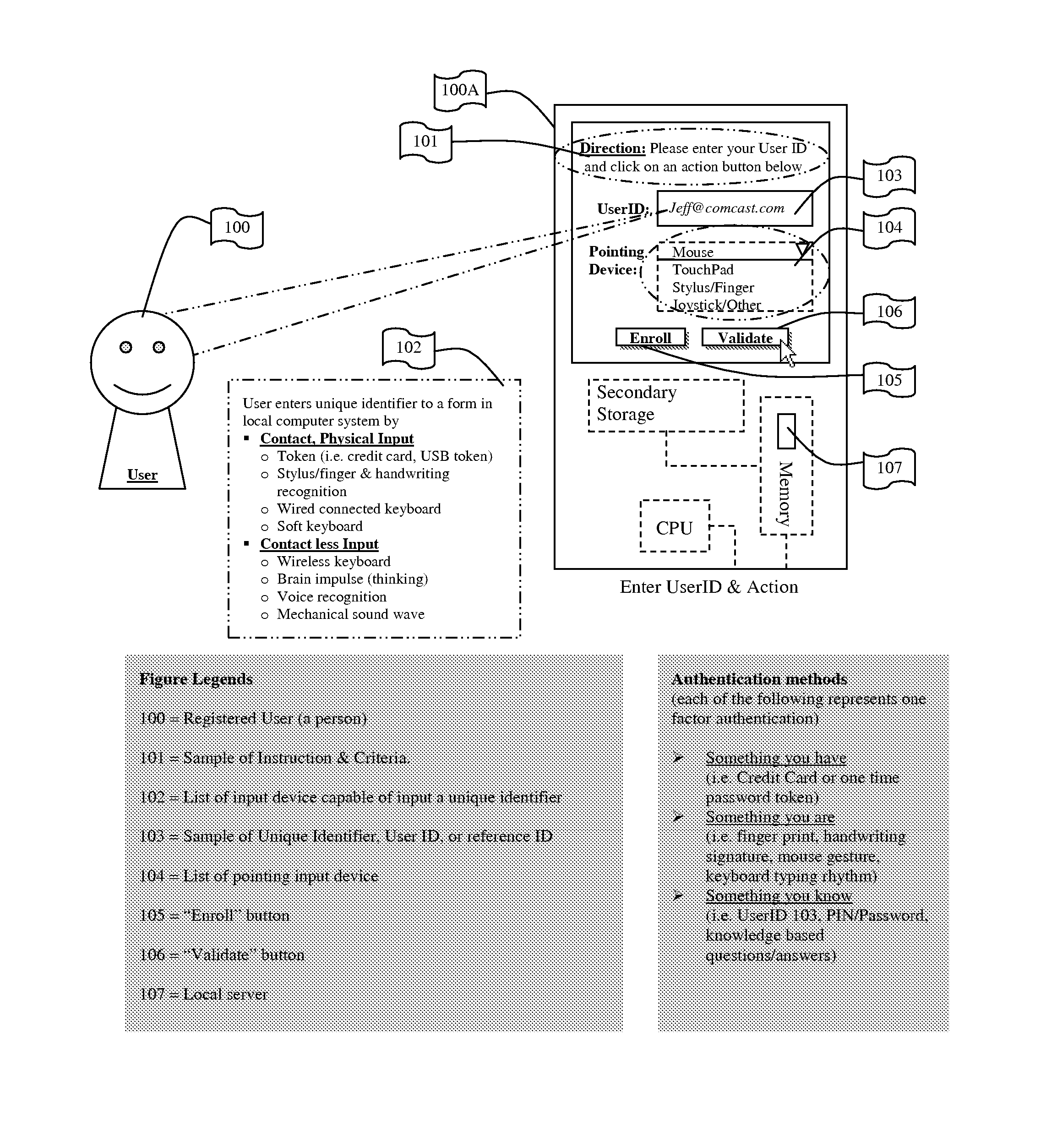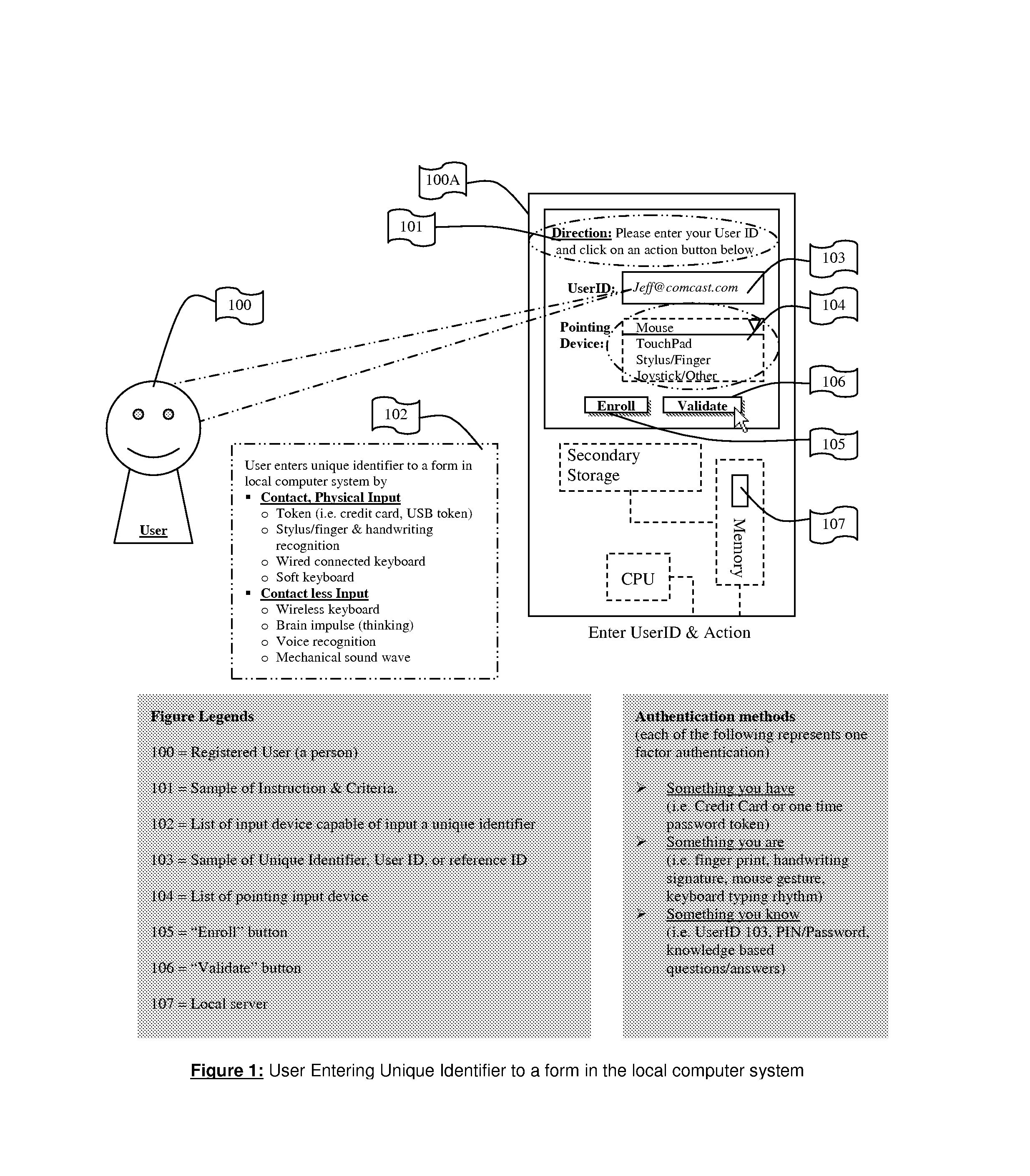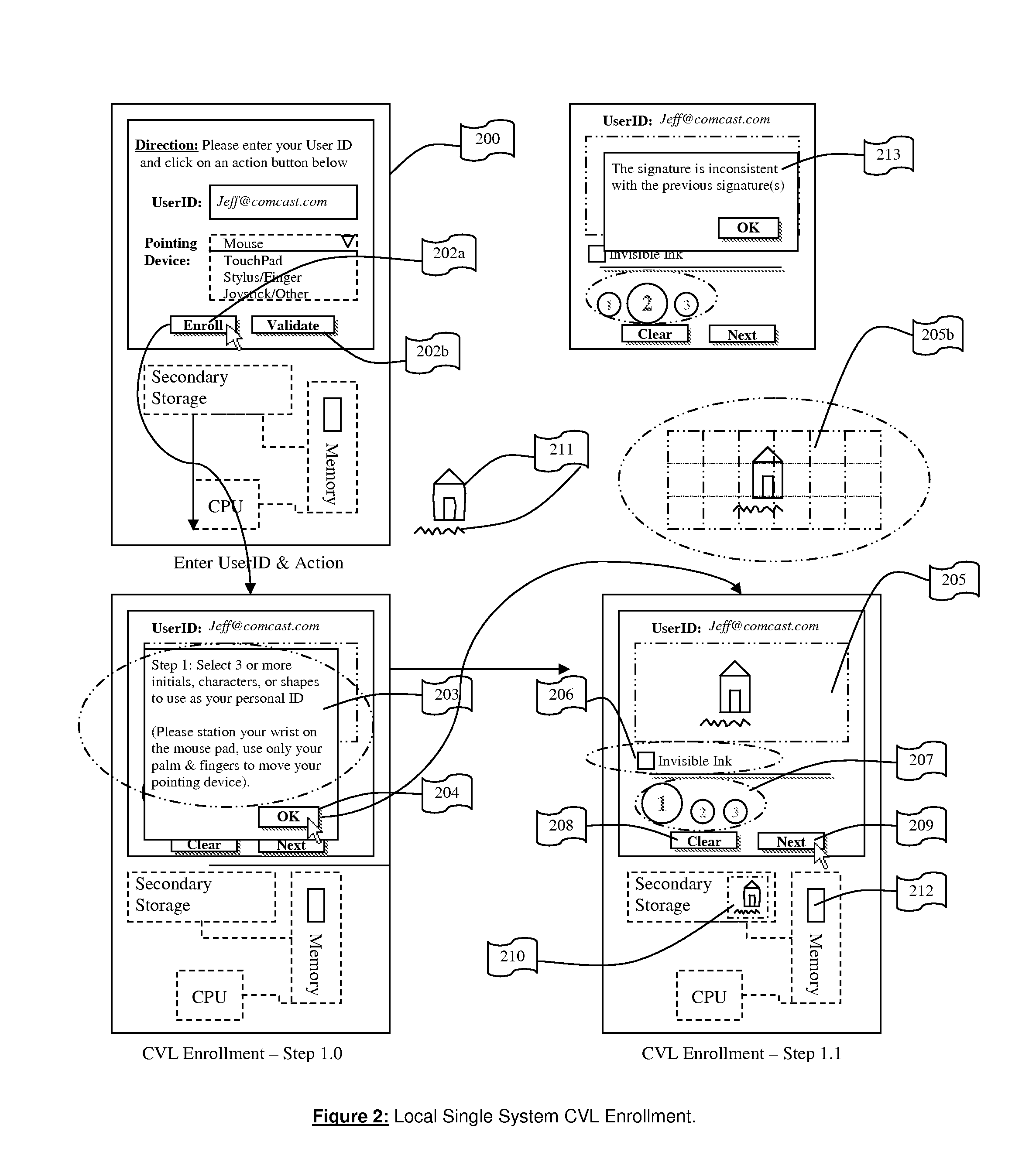System for and Methods of Storing and Comparing Computer Generated Continuous Vector Lines through a Non-Secure or a Secure Communication Channel
a computer generated, continuous line technology, applied in the direction of static indicating devices, instruments, computer peripheral equipment, etc., can solve the problems of comparison errors, time-consuming, and mistakes in recognizing the differences between two continuous lines
- Summary
- Abstract
- Description
- Claims
- Application Information
AI Technical Summary
Benefits of technology
Problems solved by technology
Method used
Image
Examples
Embodiment Construction
[0054]FIG. 11s a flow diagram describing the method for the user to enter the unique identifier to a form in the local computer system. The beginning registration operation executes at a client computer or processing device. The user 100 follows instructions 101 using a physical input method or a contact less input described in 102. After the user inputs their reference code such as a personal identification number (PIN), or password or other secret code 103 in the space provided, using the available input device 102 and the selected Pointing Input Device 104, the user selects Enroll 105 and the input is sent onto a local server 107. If they have already enrolled previously the user selects Validate 106. In either case the unique identifier is sent to local server 107.
[0055]FIG. 2 is illustrating the process of “Enrolling a Profile” in a local server. After the user has completed inputting their unique identifier or secret code 103 and selecting Enroll 105 or Validate 106 and the i...
PUM
 Login to View More
Login to View More Abstract
Description
Claims
Application Information
 Login to View More
Login to View More - R&D
- Intellectual Property
- Life Sciences
- Materials
- Tech Scout
- Unparalleled Data Quality
- Higher Quality Content
- 60% Fewer Hallucinations
Browse by: Latest US Patents, China's latest patents, Technical Efficacy Thesaurus, Application Domain, Technology Topic, Popular Technical Reports.
© 2025 PatSnap. All rights reserved.Legal|Privacy policy|Modern Slavery Act Transparency Statement|Sitemap|About US| Contact US: help@patsnap.com



